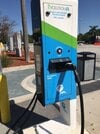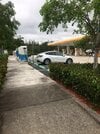Currently there is no Model Y sold in the US with the LFP battery, only the US RWD Model 3 has the LFP battery.
Currently there are three versions of the Model Y sold in the US. All US Model Y are dual motor.
Model Y (4680)
Long Range Model Y (2170)
Performance Model Y (2170).
There are currently different versions of Supercharger in the US:
Urban Supercharger (located in parking garages) 72kW maximum
V2 Superchargers: 120kW and 150kW maximum
V3 Superchargers: 250kW maximum
If you do start charging at close to the V3 maximum of 250kW it will only charge at this rate for ~6 minutes before starting to taper. In practical use the difference in time when charging from 20% to 80% SOC for a V2 or V3 Supercharger is ~10 minutes (V3 is faster but not game changing.)
Charging curves have more to do with the starting state of charge, battery temperature and ending state of charge than the specific type of battery. You can optimize Supercharging by doing the following:
Enter the Supercharger as the destination in the Tesla Navigation system and then let the Tesla vehicle navigate to the Supercharger. The Tesla Model Y will automatically begin preconditioning for Supercharging starting 20 to 30 minutes drive time from the SC location (depending on the battery temperature.)
Plan to arrive with the battery at or below 30% SOC. The Supercharger charging limit will in many cases be automatically set to 80% SOC depending on the historical usage of the Supercharger location. You can override the 80% setting but you will find that charging tapers significantly above 70% and by 80% you will want to end the charging session and continue your trip. Supercharging above 90% just takes too long and in most cases is unnecessary.
Here is one curve (Post #6):
Model Y power vs. SOC and SOC vs time plots/charts?
Supercharger charging rates can vary with how many Tesla vehicles are charging at the time (this specifically applies to V2 Superchargers when two Tesla vehicle are charging, drawing power from the same high voltage transformer, i.e. Tesla vehicles using charging spaces labeled 1A and 1B this would reduce the Supercharging rate by half. If a Tesla vehicle is charging using charging space 1A then don't park, charge in space 1B. Instead, use a different number stall if possible to charge. Sometimes this also happens with V3 Superchargers but in general for V3 Superchargers two Tesla vehicles can charge using the same high voltage transformer with no reduction in charging rate. (Some Supercharger locations may not provide the rated maximum charging rate due to local grid limitations.)




